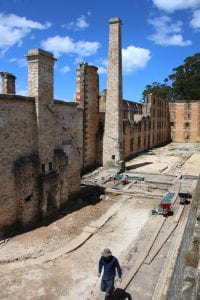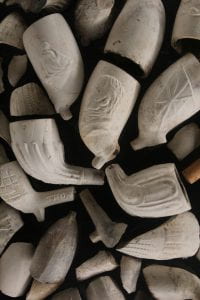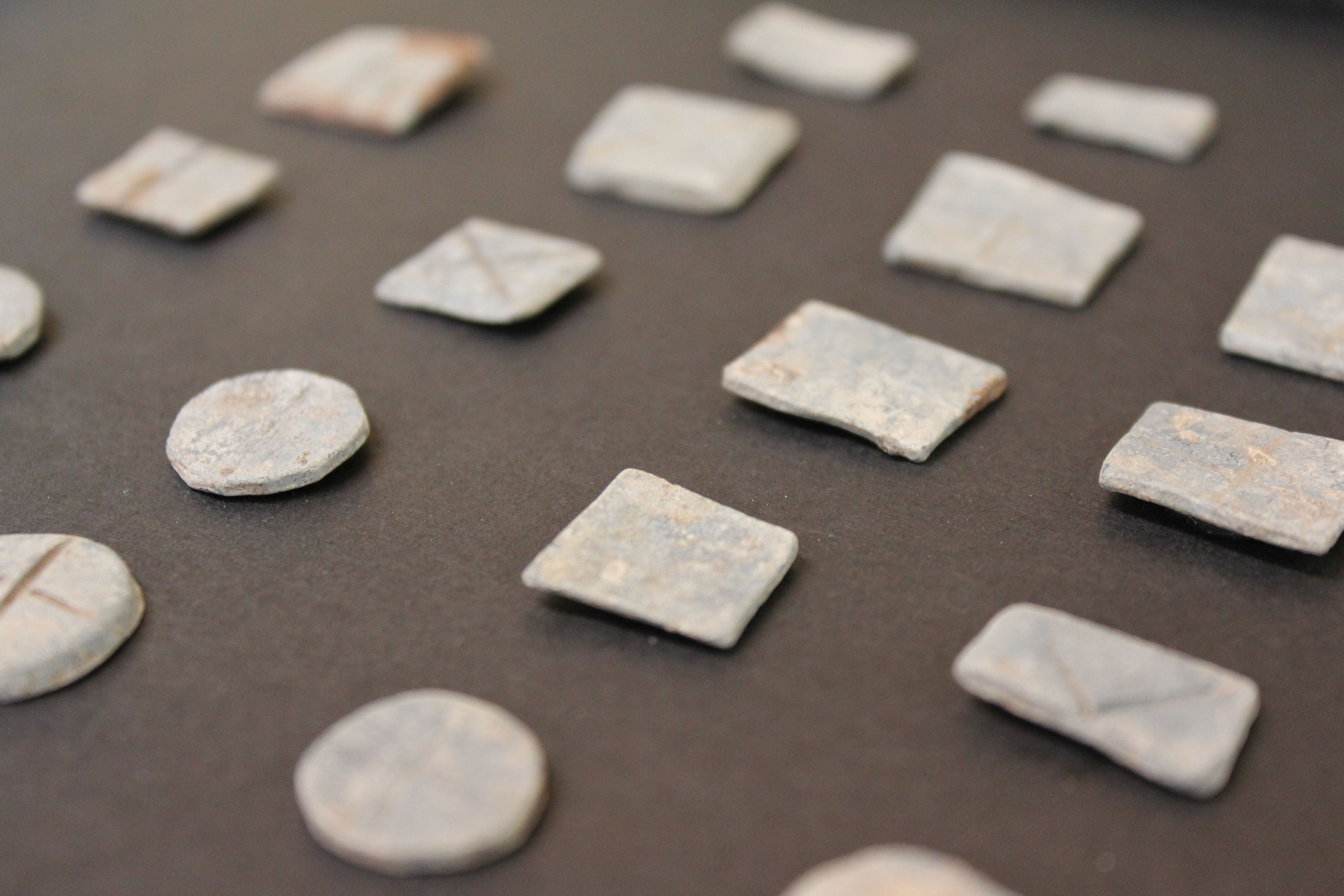Image: A number of lead tokens found during the excavation, possibly a sign of illicit behaviour by the convicts. Photo taken by PAHSMA, 2016.
Engaging with events of the past can be insightful, poignant and – when the source material is well written – endlessly intriguing. Dr Richard Tuffin, Research Fellow at UNE, has co-authored a book that recently released that accomplishes this through its insights into the work of archaeologists uncovering the convict experience in Port Arthur, Tasmania.
The book, titled Recovering Convict Lives: A Historical Archaeology of the Port Arthur Penitentiary, takes readers inside these hidden histories, revealing a side of Port Arthur that few have previously had a chance to see. Alongside Dr Tuffin this book is co-authored by David Roe, Sylvana Szydzik, E. Jeanne Harris, and Ashley Matic.

Photograph taken during the excavation. Photo taken by PAHSMA, 2016.
Dr Richard Tuffin has long been involved with archaeological digs in Port Arthur, first volunteering for an excavation in 1997. This was followed by his work as an archaeological assistant between 2001 and 2008 for the Port Arthur Historic Site Management Authority (PAHSMA). This role allowed Richard to hone his expertise and understanding of the historical significance of the region. Dr Tuffin once again returned to work in Port Arthur in 2016 to run its largest archaeological investigation to date – the Penitentiary’s ablutions, exercise and laundry areas, which is the subject of the book.
With so much experience and expertise in this area, Dr Tuffin was uniquely placed for this kind of historical work; however, there were challenges during the archaeological process. As he describes the team “often have historic records accompanying archaeological investigations that provide the excitement and the challenge. An archaeological investigation is destructive, so it is beholden upon a historical archaeologist to do all their research before a spade hits the earth. Research questions might be answerable by the historic record, meaning a site will be destroyed for little gain.”
“We’re often also faced by competing narratives presented by the history and archaeological lines of evidence. Very rarely do they align and it’s that ambiguity that I find so interesting and challenging.”
The process of converting archaeological reports and information into an engaging and accessible book is another challenge that Dr Tuffin and his fellow co-authors encountered.
“Turning a series of archaeological reports into something that is halfway interesting is really difficult,” said Richard. “That’s why I try to put time into more public-facing avenues of information sharing: online, radio, TV and a nicely put-together book are perfect mediums for sharing the message with non-academic people.”
As Dr Tuffin hinted the aim of Recovering Convict Lives is to bring the curious archaeological findings of Port Arthur to the public in an accessible way for the first time. A fact that Richard is eager to celebrate as it is not easy for historical archaeology to receive funding for research and publication: “I think we need to celebrate the existence of a book that is unashamedly about Australian historical archaeology. It’s great that publishers like Sydney University Press, as well as the Australasian Society for Historical Archaeology, are really trying to change this.”

Thousands of fragments of clay smoking pipes were found. Photo taken by PAHSMA, 2016.
When discussing what comes next Dr Tuffin notes he will continue to focus on bringing the findings of the Port Arthur excavations to light as Recovering Convict Lives is only able to explore a certain amount of the findings. As he puts it himself, “we’ve done so much work on convict labour during the last few years, so our main hope is to turn this work – and the results of the excavation – into yet another approachable book.”
While Dr Tuffin has been an important part of the co-authoring and research of this book, he has not been alone on this journey. “Archaeological practice is about teamwork,” says Richard, discussing the work that various teams have put into the publication. “It is possible – and sometimes preferable – to be a lone wolf in some other disciplines, but in archaeology little gets done by an individual. Excavations are planned and acquitted by a team. Illustrations and GIS work completed by experts, artefacts analysed by specialists. With its five authors this book is the perfect example of this. It also demonstrates the power of collaboration: it’s a book collated and written while I worked for UNE, using the results of a large project solely undertaken by the PAHSMA, bringing together the expertise of the authority’s professional staff and consultants.”
To read a sample of Recovering Convict Lives, follow the link here or to find out more about the book, take a look here.



Recent Comments